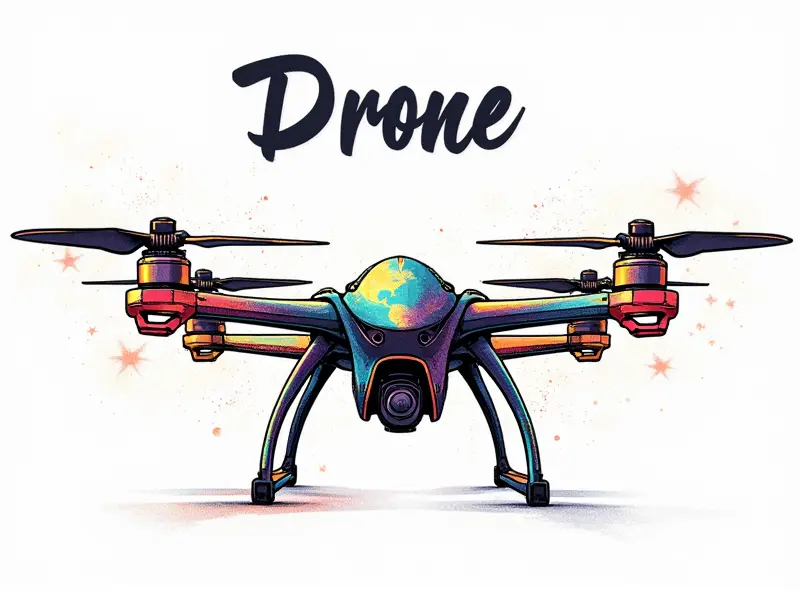Why is my RC plane vibrating?

Why Is My RC Plane Shaking?
If you've ever experienced your remote control (RC) plane vibrating uncontrollably during flight, you're not alone. This issue can be frustrating and potentially dangerous for both the pilot and the aircraft. In this article, we'll explore why RC planes shake or vibrate and provide actionable solutions to eliminate these problems.
Troubleshooting Vibrations in RC Planes
Vibrations in RC planes can stem from various sources, ranging from mechanical issues to aerodynamic factors. Before attempting any fixes, it's crucial to diagnose the root cause of the vibration accurately. Here are some common troubleshooting steps:
- Inspect Propellers and Motors: Ensure that all propellers are securely attached without damage or wear.
- Check Battery Connections: Loose battery connections can lead to intermittent power issues, causing vibrations.
- Airframe Alignment: Misalignment in the airframe can cause uneven lift and result in shaking during flight.
Common Causes of RC Plane Vibration
The primary causes of vibration in RC planes include:
- Balanced Propellers: Unbalanced propellers are a common culprit, leading to excessive vibrations. Ensure that each blade is equally weighted.
- Misaligned Servos: Incorrectly positioned servos can cause wobbling and shaking in the control surfaces.
- Aerodynamic Issues: Poor aerodynamics or design flaws can create turbulence, leading to unstable flight conditions.
Fixing Wobbly RC Aircraft Issues
To address wobbles and vibrations effectively, follow these steps:
- Balancing Propellers: Use a propeller balancer tool to ensure both blades are perfectly balanced.
- Servo Adjustment: Fine-tune the servos for precise control without excessive movement or backlash.
- Aerodynamic Adjustments: Modify wing profiles, add strakes, or install vortex generators to improve stability.
RC Plane Jitter: Quick Fixes Explained
For quick fixes during flight preparation or when you notice minor shakes, consider these tips:
- Tighten Screws and Bolts: Loose components can cause vibrations. Ensure all screws and bolts are securely tightened.
- Battery Check: Replace batteries if they're old or weak to avoid power fluctuations.
- Propeller Inspection: Inspect propellers for any damage, such as cracks or chips, and replace them if necessary.
Eliminate RC Plane Wobble for Smooth Flights
To achieve smooth flights without vibrations, focus on these long-term solutions:
- Maintain Regular Inspections: Perform routine checks to catch potential issues before they become problematic.
- Upgrade Components: Invest in higher quality propellers and servos designed for better performance and durability.
- Aerodynamic Optimization: Continuously refine your aircraft's design based on flight testing results.
RC Plane Shakes During Flight: Causes
The causes of RC plane shaking during flight can be broadly categorized into mechanical, electrical, and aerodynamic issues. Understanding these categories will help you pinpoint the specific problem:
- Mechanical Issues: Loose parts, unbalanced propellers, or damaged components.
- Electrical Problems: Poor battery connections, faulty ESCs (Electronic Speed Controllers), or weak power supply.
- Aerodynamic Factors: Design flaws, insufficient wing area, or incorrect airfoil selection.
Understanding RC Plane Tremors
Tremors in RC planes are often related to the control system's response. A sudden tremor can indicate a malfunctioning servo or an issue with the radio link:
- Servo Malfunctions: Servos that twitch or jitter during operation might need adjustment or replacement.
- Radio Interference: External interference from other electronic devices can disrupt communication between the transmitter and receiver.
RC Airplane Vibration Problems Solved
Solving vibration problems in RC airplanes involves a systematic approach:
- Analyze Flight Logs: Review flight data to identify patterns of instability or sudden changes in performance.
- Component Testing: Test individual components such as motors, propellers, and servos for proper function.
- Aerodynamic Modeling: Use simulation software to test different configurations before implementing physical changes.
Diagnosing RC Aircraft Shaking Problems
To diagnose shaking problems in RC aircraft, follow these diagnostic steps:
- Pre-Flight Inspection: Conduct a thorough inspection of all components for signs of wear or damage.
- In-Flight Monitoring: Observe the plane during flight to identify when and how shaking occurs.
- Post-Flight Analysis: Examine the aircraft after landing to check for any anomalies that might explain the vibration.
Troubleshooting RC Plane Vibrations
To troubleshoot vibrations in your RC plane, consider these detailed steps:
- Battery Health Check: Verify battery voltage and current capacity to ensure consistent power delivery.
- Motor Efficiency Test: Use a motor tester to assess the performance of each motor individually.
- Servo Calibration: Calibrate servos for optimal operation, ensuring they move smoothly without excessive resistance.
Conclusion
Vibrations in RC planes can be frustrating but are often manageable with proper diagnosis and maintenance. By understanding the common causes and implementing effective troubleshooting techniques, you can eliminate most vibration issues and enjoy smoother, more stable flights. Regular inspections and proactive maintenance will help keep your RC plane running smoothly for years to come.

